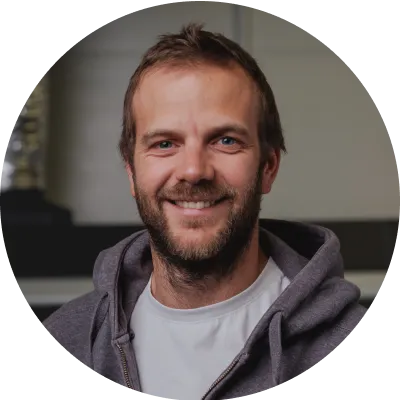“I have an idea for a device that will revolutionize industry X, but I don’t have the budget to produce it.”
This rather depressing scenario has stalled a lot of great ideas over the centuries. The main obstacle in most cases was the cost of producing the part – regardless of whether the appropriate technology was machining or injection.
However, in 2016, a new solution appeared on the market that allowed such ideas to be implemented even with very limited startup budgets. We are, of course, talking about HP Multi Jet Fusion printers.
Since 2018, when we purchased the first device of this type, we have helped approximately 30 startups to launch new products on the market. These are the stories we will tell you in this article.
HP Multi Jet Fusion – perfect technology for startups
MJF technology is widely used in manufacturing. Maintenance departments are increasingly choosing this solution for creating spare parts due to short delivery time and low cost.
However, if we look at the most important features of MJF, it is hard to resist the impression that this technology was created with startups in mind. What exactly are we talking about?
Production cost (especially at low volumes)
The issue of profitability of MJF technology comes down to two key aspects:
- Initial costs, such as an injection mold (even over $100,000), are not required.
- The ordered volume does not matter for the printer, so production is profitable even from 1 piece.
What does this mean in practice?
In the model startup process, after a series of prototypes, there comes a moment when the company decides to produce the first commercial batch of the product.
This “final” version, however, is rarely the final version in reality. Following end-user testing and feedback, further design changes are made. That’s how the product gradually develops and the company maintains financial liquidity.
In the case of the most common competing solution, this model scenario is not possible. The ordered injection mold cannot be modified, and low volumes result in high costs in other technologies.
Part quality
Due to the material used in MJF and the sintering method, printed elements have all the strength and aesthetic features of the finished product. A perfect example of this are those printed by us prosthetic sockets.
Thanks to this, this technology can be used both for the prototyping process and actual production. In many cases, we support clients at all stages of product development – from the concept and design to cyclical production of parts in the just-in-time model, in line with demand.
Lead time
There are quite a lot of reasons lead time can be crucial, including competition, the need to deliver results before the investment round, or simply the need to quickly achieve profitability. Most conventional technologies don’t make the task any easier. Some of our customers waited up to half a year for an injection mold!
In our case, we are able to deliver items within 3 days of placing the order.
More flexibility for designers
Innovation does not like rigid frameworks, and unfortunately conventional technologies impose quite specific limitations on designers. 3D printing, however, gives the freedom and the ability to create geometries that would not be possible to obtain, e.g. in machining or injection technology – including empty spaces inside parts or various types of bends, threads, etc.
A wide range of potential applications
The elements printed by us were used:
- in contact with salt water (on surfboards)
- in contact with the skin (prosthetic sockets)
- in space (in devices for examining brain activity: Cortivision)
From concept to design together with Cubic Inch
Manufacturing parts is one thing, but to implement a new device on the market, a design and prototyping process is necessary, and not every person with a brilliant idea has such competences.
A perfect example of such a situation is our cooperation with Arek Biały, a professional barista and creator of QuinSpin, a device for cleaning coffee machine flasks. Arek came to us with a concept and several sketches of a product that was supposed to solve the age-old problem of baristas around the world. During the year, adapting to budget resources, we helped Arek go through subsequent stages of prototyping until the final version of the product and production in the just-in-time model.
As the creator mentions, without our service the project would not have had a chance to be implemented. You can read the full history of the project here.
Implementing innovative products has never been easier
As a team of enthusiasts of new technologies, we are excited to undertake more and more startup projects every year – both as designers and parts suppliers.
Recent years have shown us and many of our clients that introducing new products to the market can be a much easier and faster process thanks to the use of modern additive technologies.
So if you have an idea for an innovative device and are looking for comprehensive implementation support or simply need a trustworthy parts supplier, write to us. :)


